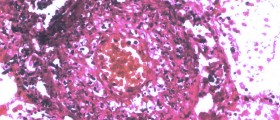
Overview of Vascular Diseases
The circulatory system is composed of the heart and a structure of blood vessels. The heart pumps blood into the blood vessels, which are little flexible cylinders that carry blood to every organ in the body. Veins carry blood to the heart, while arteries carry blood from the heart. Vascular disease is any kind of disorder that involves the arteries, veins, and lymph vessels or conditions that pertain to the blood flow.
Range of Vascular Diseases
There are various types of vascular diseases affecting different parts of the system, with aneurysm being an anomaly of the blood vessels. An aneurysm is characterized by an enlargement of the blood vessels and while it can occur anywhere in the body, it is most likely found in the aorta. There are different subtypes of aneurysms and many are not harmful, especially if they are little. On the other hand, large aneurisms can lead to serious health problems. For instance, they can burst and cause internal bleeding. Also, the larger the aneurism the more painful it as it applies pressure on the vessel. A possible effect of an aneurism is a blood clot, which prevents the circulation of blood. Lastly, in the presence of an aneurism calcium and fat build up around it causing additional health problems. Another vascular disease is Raynaud’s disease which is induced by reduction of blood flow in the fingers and toes. Such reduction can be caused by cold weather while certain professionals are also prone to Raynaud’s. The condition is characterized by contractions in the arteries resulting in the skin to appear blue or white as well as cold. Buerger’s disease is slightly different as it affects the larger arteries than Raynaud’s. Buerger’s condition is manifested through blood flow reduction in the arteries of the arms and legs which in turn decreases the blood supply in the hands, fingers, feet, and toes resulting in pain. In extreme cases, the blood flow stops and extremities start decaying making it necessary to amputate. The cause of Buerger’s disease remains unclear but many experts believe is it correlated with smoking and exposure to smoke. Peripheral artery disease is the condition of the blood vessels outside the heart during which fatty and cholesterol deposits accumulate. In sufficient amount of time the build up reduces the volume of the vessels, or arteries in this case, resulting in reduced blood flow. Aside from the peripheral artery disease, the peripheral venous condition can also pose substantial problems. The veins are composed of valves which open and close to allow enough amount of blood to pass. In case the valves are malfunctioning the blood accumulates inside the veins resulting in enlargement and subsequent pain. Aside from the blood flow being reduced or slowed down, blood clots can also form and cause further problems. Aside from damage in the valves, blood clots usually form as a result of reduced physical activity, pregnancy or hormonal imbalance, genetic problems such as deficiency in blood thinning proteins, and injury or trauma to the veins. Blood clots can form inside the veins or get disconnected and move to the lungs. The damaged valves can also cause a condition called varicose veins. Varicose veins are manifested through swelling and changing in colour to purple. As a result of those changes the legs get swollen and painful. Women are more prone to such problems, which are usually genetic and affect many individuals within a family. In addition, any kind of blood supply reduction in the body can lead to serious problems. For instance, reduced or blocked blood flow to the heart results in a heart attack. Similarly, if the arteries carrying the blood into the brain are partially or completely blocked a stroke occurs. Kidney failure and high blood pressure can be caused by insufficient amount of blood supply in the renal area. Aside from veins and arteries, vascular diseases also affect the lymphatic system. The primary purpose of the lymphatic system is to maintain proper immune system operation and in turn defend the body against external adverse elements. The lymphatic system is composed of lymph nodes and vessels. A very common disease which affects them is called lymphedema. Lymphedema is characterized by fluid build up which lead to swelling and pain and is caused by damage in the vessels or nodes. Unless there is an underlying medical condition which attacks the lymph nodes and vessels, the damages can be cause by injury or trauma, infection, and radiation.
Tests for Vascular Diseases
There are various tests used to diagnose vascular disease. MRI scanning is a commonly used test which provides clear pictures and is able to detect small changes in the blood vessels. The Doppler ultrasound is used to assess any changes in the peripheral vascular problems as well as any disruptions of blood flow into the brain.
















Your thoughts on this
Loading...